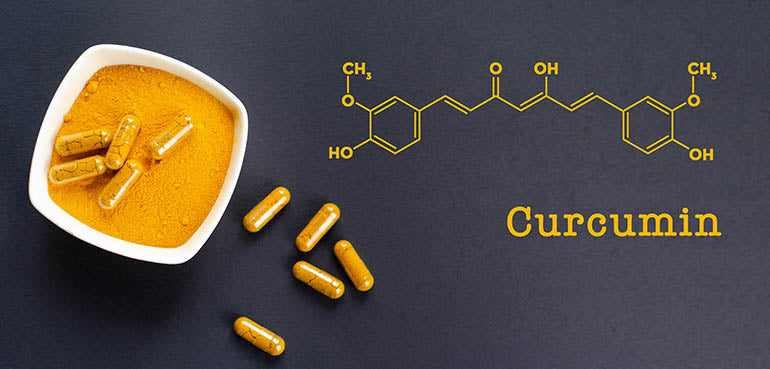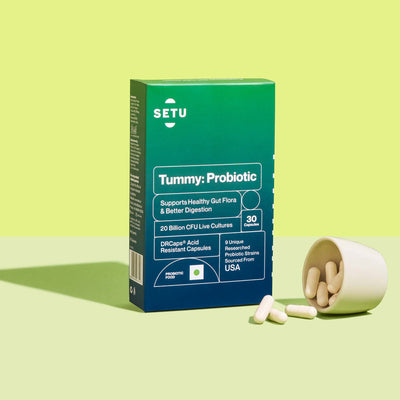Extraction of curcumin from turmeric
11 Oct 2023
How to Boost The Absorption of Curcumin From Turmeric?
Introduction
Turmeric is considered a golden spice with potent medicinal values and benefits. Turmeric has been used to treat inflammation, bacterial infections and digestive issues for years. Turmeric contains bioactive compounds called curcuminoids and curcumin is the principal curcuminoid of turmeric. Curcumin from turmeric gives it a bright yellow colour and is used to add colour to medicines and food. Curcumin benefits in treating health issues are immense. Read on to understand the uses of curcumin.
What are Turmeric and Curcumin?
Turmeric is derived from the root of Curcuma Longa and belongs to the ginger family and has an intense golden colour. It is used to treat several skin and stomach disorders. Curcumin is one of the main plant substances that turmeric is made of. Curcumin in itself has various health benefits. However, Curcumin has to be extracted from turmeric to derive its unique health benefits.
There are various ways of extraction of curcumin from turmeric. But the most common and simple method is the solvent extraction method ensued with chromatography. Organic solvents like methanol, ethyl acetate, acetic acid, hexane and acetone form a part of the curcumin extraction process.
Benefits of Curcumin
From ancient times turmeric has been recommended for treating several health issues. With intense research over years, the healing properties of turmeric have gained popularity. The research has been concentrated on unearthing the benefits of curcumin, the dominant bioactive compound in turmeric.
Generally, curcumin has been used to treat digestive disorders, joint pains, skin issues, respiratory disorders etc. But the research has proved that it has other distinct health benefits besides the ones mentioned above.
The various Curcumin benefits are given below:
Improves Kidney Health
Curcumin enhances the glutathione concentration and stimulates glutathione peroxidase which results in the removal of free radicals. Removal of free radicals largely prevents kidney damage. Also, inhibiting oxidative stress which is one of the distinct properties of curcumin helps in treating nephrosis.
The development of kidney issues is mainly due to inflammation. The anti-inflammatory property of curcumin helps in addressing inflammation and preventing kidney disease.
The antibacterial and antiseptic properties of curcumin are very effective in treating bacterial as well as viral infections. This helps in averting/treating urinary tract infections while boosting immunity.
Reduces Arthritis Symptoms
Arthritis is a degenerative joint disease that may occur as age advances. Persons with joint injuries are more vulnerable to arthritis. Research has shown that curcumin benefits arthritis by inhibiting the function of certain enzymes and cytokines responsible for inflammation. This helps arrest the symptoms of arthritis and also provides relief from acute pain caused by inflammation of joints.
Improves Eye Health
Studies have shown curcumin benefits on several eye issues like cataracts, glaucoma, diabetic retinopathy, corneal wound healing, age-related macular degeneration, dry eyes, conjunctivitis etc. Clinical studies have indicated the therapeutic use of curcumin in treating eye diseases.
Reduces Hay Fever
Absorbing curcumin has been shown to reduce hay fever or chronic allergic symptoms. The symptoms include continuous sneezing, common cold, itching and congestion. The antioxidant property of curcumin boosts immunity. Allergies are believed to be the result of increased oxidative stress. Consumption of curcumin helps in reducing oxidative stress and is very effective in treating allergies and asthma.
A possible treatment for cancer
Though there is not much evidence to believe that curcumin is effective in treating cancer, continuous studies are being conducted to unearth the potential of curcumin in treating cancer. However, some clinical studies have shown that curcumin can shun the rapid multiplication of cancer cells to a certain extent.
Curcumin Uses
Given below are some of the uses of curcumin.
Traditional uses
Curcumin from turmeric is used in regular cooking, in dietary supplements and in cosmetic products. Its antiseptic, antioxidant and anti-inflammatory properties are beneficial in treating various health issues.
Curcumin from turmeric is used in ayurvedic medicines to treat all the doshas i.e., Vayu, Pitta and Kapha. Curcumin specifically benefits the tissues of the plasma, blood and lymph. A cooling and soothing effect is provided to these tissues while improving their flow and functioning. Curcumin is largely used to detoxify the system.
It is used in ayurvedic medicines to treat issues relating to joints, muscles and liver. It is also used in ayurvedic cosmetic preparations for radiant and flawless skin.
Curcumin Supplements
Cell oxidation and inflammation are the two major causes of age-related issues. There are several curcumin supplements combined with Spirulina, Bioperine, pepper, mushroom etc available in the market that help in relieving joint pain and stiffness, reducing inflammation, boosting immunity, improving skin quality, maintaining cholesterol levels, dealing with depression, improving concentration, boosting energy and improving heart health.
Ways to boost curcumin absorption
Curcumin by itself is not easily absorbed as it is not easily soluble in water. Curcumin benefits could not be ignored and so several ways of improving the absorption of curcumin were surfaced with extensive research.
Implement the various methods to boost curcumin absorption given below for optimum curcumin benefits.
Blending with fats
Curcuminoids are lipophilic and blend well with fatty substances like oil, dairy products etc. and will be easily absorbed by your gut. Cooking curcumin with good quality fats like coconut oil or making a smoothie with almond milk, coconut milk or any other fatty dairy product will help in optimum absorption of curcumin.
Mixing with Pepper
Most of the curcumin consumed gets digested even before it is absorbed into the bloodstream. The digestive enzymes in the stomach, intestine and liver spur up the metabolism of curcumin. Piperine, which is a component of pepper, protects curcumin from these digestive enzymes that try to remove the curcumin from the bloodstream and makes it more bioavailable.
The absorption of curcumin is optimised by piperine without giving rise to any side effects. Studies have shown that the absorption of curcumin is enhanced by 2000% by piperine. Therefore it is recommended to cook turmeric with oil and pepper to boost the absorption.
It is also observed that most curcumin supplements available in the market are combined with pepper for greater absorption.
Consumption of turmeric in a natural way
Curcumin is not the only component in turmeric. Turmeric roots contain over 100 compounds that have pharmaceutical properties. During the extraction process most of these compounds are lost and what will be left is only the chemical curcumin. Curcumin is better absorbed when all the compounds work in harmony than when available as an isolate. Turmeric root is used in traditional medicines like ayurvedic preparations to improve absorption and efficacy. Most physicians recommend using turmeric root in food preparations as well as in supplements for better absorption.
In the olden days, turmeric paste was made from turmeric root for application as a face pack. This helped in skin health and also removed unwanted facial hair. So the best way to use turmeric or curcumin is in the natural form.
By Heating The activity of compounds in spices gets triggered with heat. The same is with turmeric. Curcumin benefits can be enhanced by heating because heat makes curcumin more soluble in water. The anti-inflammatory and antioxidant properties of curcumin from turmeric increase when exposed to heat. It is necessary to understand the degree of heat turmeric can be exposed to. There is no need to boil turmeric for a long time as it is reasonably sensitive to heat. Using turmeric in curries can increase the absorption of curcumin.
Now we can understand why turmeric boiled with milk was a common remedy for issues like the common cold, joint pains, external as well as internal injuries etc.
Conclusion
On browsing through the article you would have understood why turmeric is an essential ingredient in Indian cuisine. Be it savouries or sweets a dash of turmeric is a must. Our ancestors have induced this habit of including turmeric in food preparations and drinking milk boiled with turmeric to ascertain that our system gets a consistent dose of curcumin from turmeric for overall health.

Skin: Renew - Glutathione
- ₹1,694
- ₹1,694
-
₹2,200 -
You Save:
₹506 (23%)
Categories
- Choosing a selection results in a full page refresh.
- Press the space key then arrow keys to make a selection.
this is the sidecart








